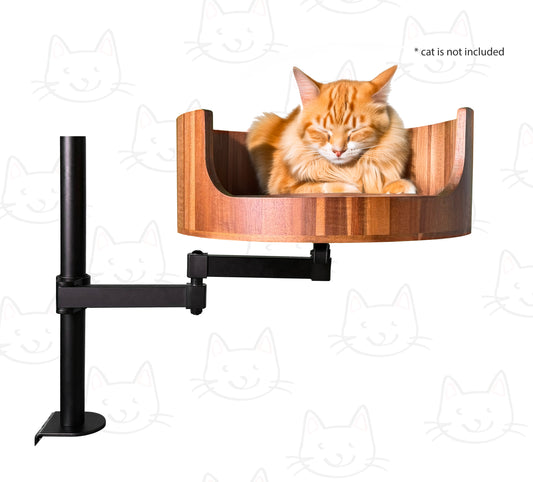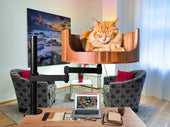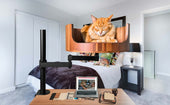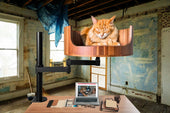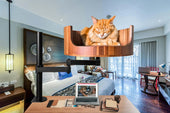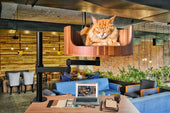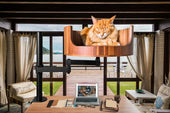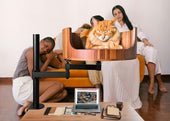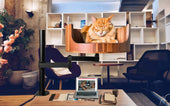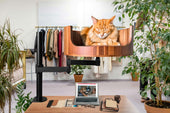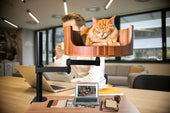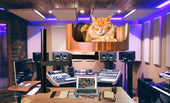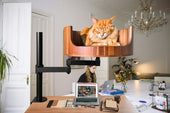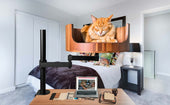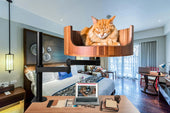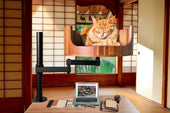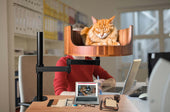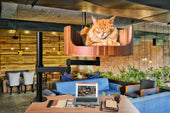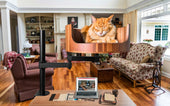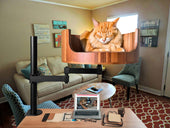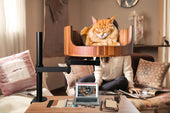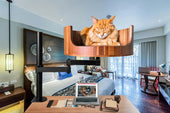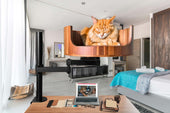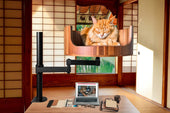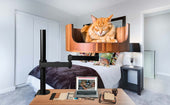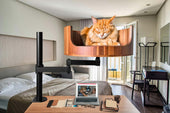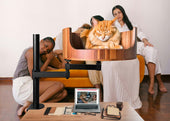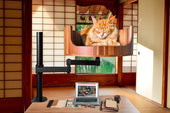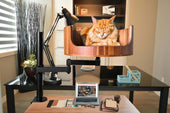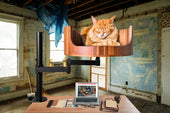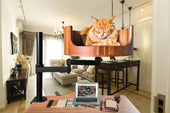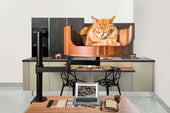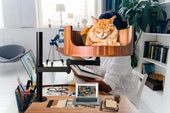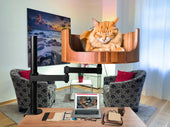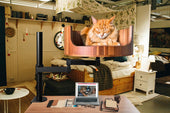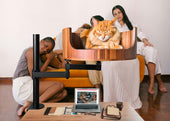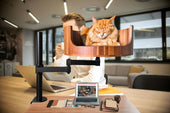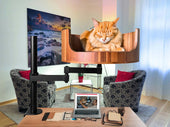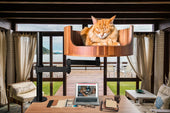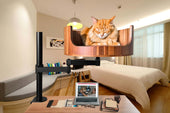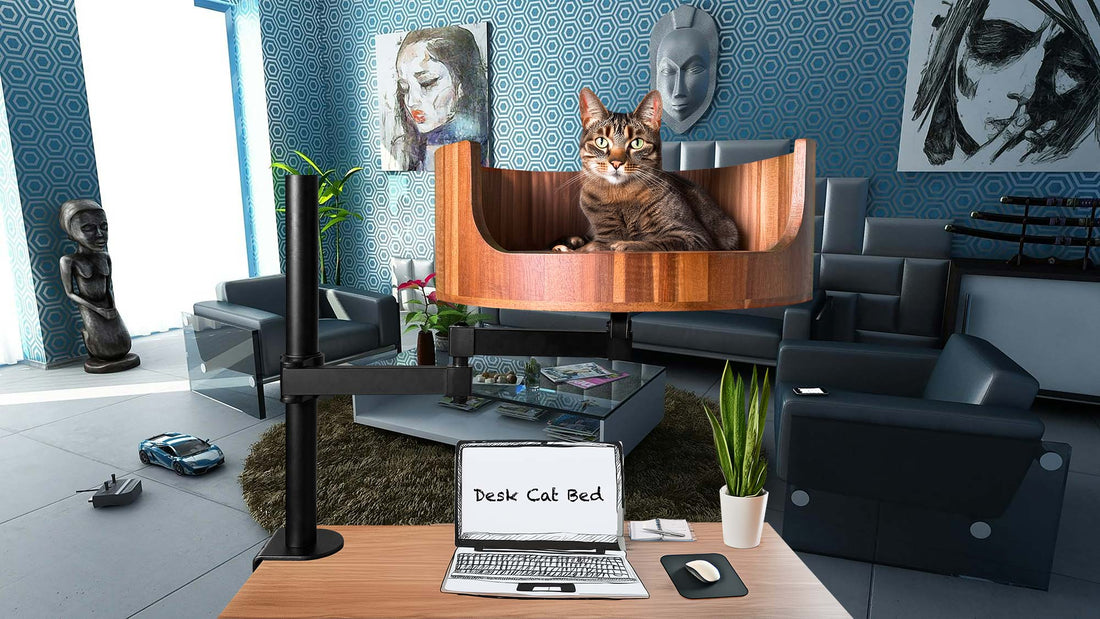
Cat Vomits Dry Food: Causes and Solutions Explained
Share
Does your cat frequently vomit after eating dry food? You're not alone. Many cat owners experience this common issue, which can be both frustrating and concerning. In this article, we will explore the various causes of why your cat may be vomiting after consuming dry food, as well as provide practical solutions to help alleviate this problem. From dietary issues to underlying health concerns, understanding the root of the issue is crucial in finding the best course of action for your feline friend.
One possible reason for your cat's vomiting may be due to them eating too quickly or overeating. This can lead to indigestion and regurgitation, especially with dry food which may not be as easy to digest as wet food. Additionally, your cat could have a sensitivity or allergy to certain ingredients in their dry food, causing adverse reactions such as vomiting. Other potential factors to consider include hairballs, stress, or underlying health conditions such as gastritis or pancreatitis. By identifying the cause of your cat's vomiting, you can take proactive steps to address the issue and ensure a healthier and more comfortable eating experience for your beloved pet.
1. Common reasons for cats vomiting dry food include eating too quickly, food sensitivity, and hairballs.
2. Frequent vomiting may indicate a more serious health issue, such as an obstruction in the digestive tract.
3. Solutions to reduce vomiting include feeding smaller, more frequent meals, switching to a higher quality food, and providing more opportunities for exercise and mental stimulation.
4. Consulting with a veterinarian is crucial to properly diagnose the cause of vomiting and determine the best course of action.
5. With proper care and attention, many cases of cat vomiting can be effectively managed and reduced.
Common Causes of Cat Vomiting with Dry Food
One common cause of cats vomiting dry food is eating too quickly. When cats eat their food too fast, they may swallow air along with the food, which can lead to digestive issues and vomiting. Another cause could be food allergies or sensitivities. Cats can develop allergies or intolerances to certain ingredients in their dry food, which can result in vomiting. Additionally, if the food is expired or spoiled, it can also cause a cat to vomit.
Health Conditions Associated with Cat Vomiting
Cat vomiting can also be a sign of underlying health conditions. One common health issue that can cause cats to vomit is gastroenteritis, which is the inflammation of the stomach and intestines. Other health conditions such as pancreatitis, kidney disease, or hyperthyroidism can also cause vomiting in cats. It is important to consult with a veterinarian if your cat is vomiting frequently to rule out any serious health concerns.
Ways to Prevent Cat Vomiting with Dry Food
There are several ways to prevent cat vomiting related to dry food. One approach is to slow down your cat's eating habits by using puzzle feeders or food-dispensing toys that encourage slower eating. Another solution is to switch to a high-quality, easily digestible dry food that is free of common allergens. It is also essential to ensure that your cat has access to fresh water at all times to aid in digestion. If your cat continues to vomit despite these measures, it is best to seek advice from a veterinarian for further guidance.
Frequently Asked Questions
1. Why does my cat vomit after eating dry food?
There are several reasons why your cat may vomit after eating dry food, including eating too quickly, food allergies, or an underlying medical condition. It is important to consult with your veterinarian to determine the cause of your cat's vomiting.
2. Will the Desk Cat Nest help prevent my cat from vomiting after eating dry food?
The Desk Cat Nest is designed to encourage slower eating behavior in cats, which can help prevent vomiting caused by eating too quickly. However, it is not guaranteed to solve all instances of cat vomiting, especially if the vomiting is due to an underlying medical issue.
3. How does the Desk Cat Nest work to prevent vomiting?
The Desk Cat Nest features a maze-like design that requires cats to work for their food, slowing down their eating pace. This helps prevent them from gulping down their food too quickly, reducing the likelihood of vomiting after meals.
4. Can I use wet food with the Desk Cat Nest?
The Desk Cat Nest is specifically designed for use with dry food. While you could potentially use wet food with the Nest, it may not have the same effect in slowing down your cat's eating behavior as dry food would.
5. Is the Desk Cat Nest easy to clean?
Yes, the Desk Cat Nest is easy to clean. Simply disassemble the pieces and wash them with soap and water. Make sure to thoroughly dry the Nest before reassembling it for your cat to use.
In conclusion, a Desk Cat Bed is a valuable choice for cats who vomit dry food. By providing a comfortable and elevated space for your feline friend to relax and digest their meals, this product can help reduce the occurrence of vomiting. The elevated design of the Desk Cat Bed can help promote better digestion and prevent regurgitation, making it a beneficial addition to any cat owner's home. Additionally, the soft and plush materials of the bed make it a cozy and inviting space for your cat to rest, promoting overall health and well-being. Invest in a Desk Cat Bed today to provide your cat with a comfortable and supportive environment that can help alleviate issues with vomiting dry food.

